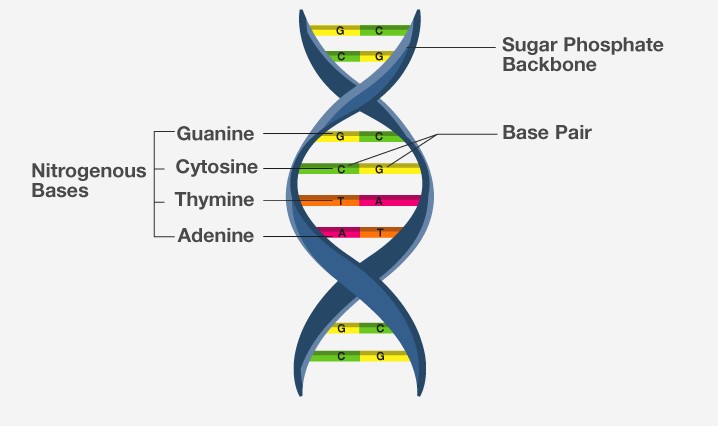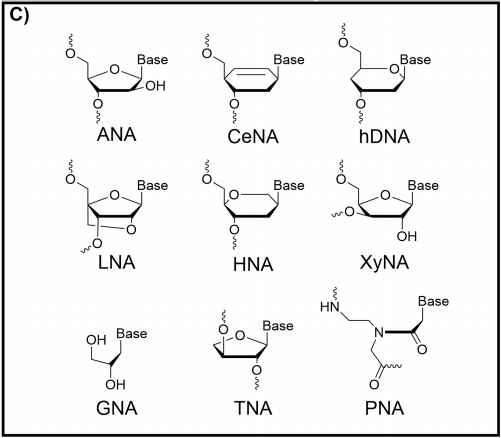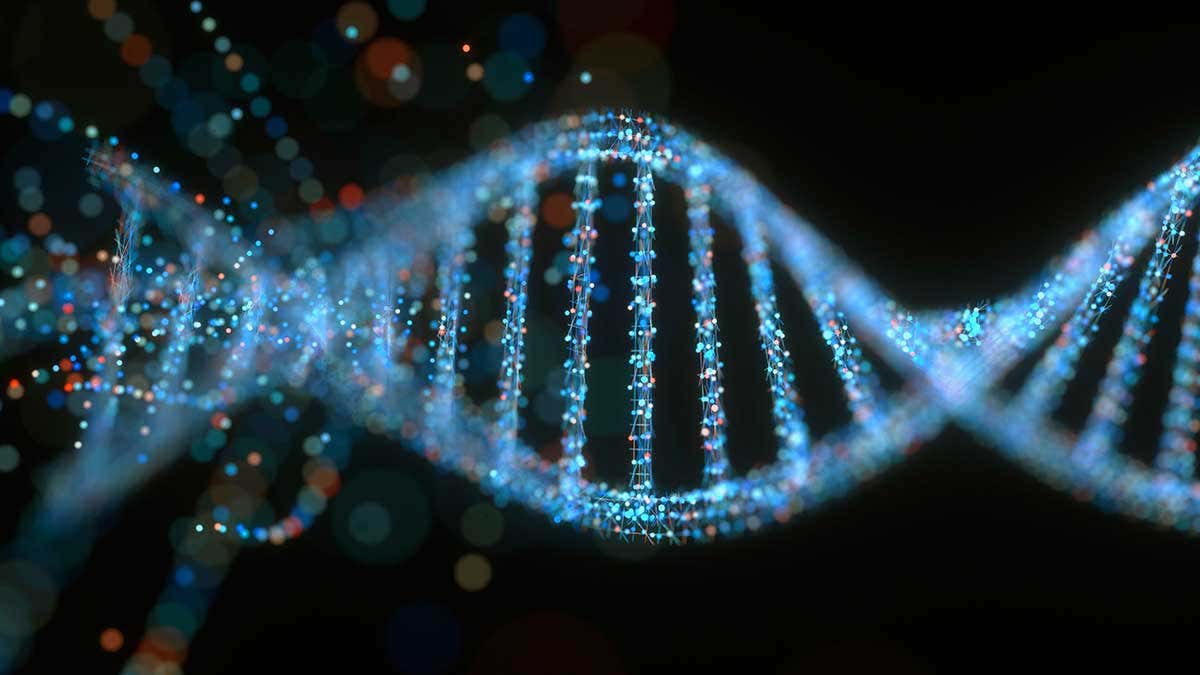Life as we know it uses DNA (deoxyribonucleic acid) and RNA (ribonucleic acid) to store and utilize genetic information. These molecules carry genetic instructions for the development, functioning, growth and reproduction of all known organisms and many viruses. However, what if life somewhere else developed in a totally different way? This question intrigues scientists, so they decided to explore this possibility.
Before we continue, we need to understand what is DNS comprised of. DNA and RNA are nucleic acids; alongside proteins, lipids and complex carbohydrates, nucleic acids are one of the four major types of macromolecules that are essential for all known forms of life. The two strands in DNA’s double helix structure are also known as polynucleotides as they are composed of simpler monomeric units called nucleotides. Each nucleotide is composed of one of four nitrogen-containing nucleobases (cytosine, guanine, adenine or thymine), a sugar called deoxyribose, and a phosphate group. The sugar and phosphate give nucleic acid an alternating sugar-phosphate backbone.

The researchers focused their search on organic molecules that can assemble into a linear polymer with at least two attachment points, additionally, they need to have a place for nitrogen bases to connect. Another condition was associated with the substructure of the molecule, which needs to be stable in a polymer configuration. They decided that these elements make the nucleic acid molecules distinct. Therefore, a so-called “chemical space” was created for the computer simulation.
Interestingly, the analysis found more than 1,160,000 potential nucleic acid molecules. The number surprised even the most hopeful scientists as it exceeded the most extreme estimates which were made before the simulation. These DNA alternatives do not contain the traditional sugars and phosphorus, so they cannot be called DNA. In fact, they are some other kind of nucleic acid with potentially similar properties.

What comes next is a more detailed analysis of these molecules in a laboratory setting to see if they can really work as a DNA alternative. This is an exciting find as it can help scientists who are working on new therapeutic medicine that resemble nucleic acid – some of them should help combat viruses and cancer.
Additionally, it also provides a bigger hope of finding extraterrestrial life, as scientists until now always focused their search on finding life as we know it. However, on some distant world, organisms could be living in totally different conditions and use GNA, TNA or PNA instead of DNA.


















